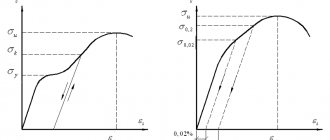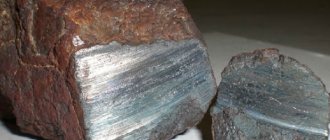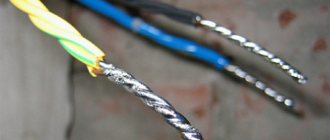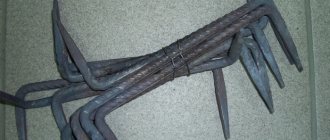07.06.2020
// Rubber mixtures Natural rubber is not always a good starting material for producing parts. This is associated with a minimum indicator of its elasticity, which strongly depends on the surrounding temperature. Rubber turns into a solid state at temperatures close to 0 degrees, and when lowered further it turns into a brittle state. Temperatures above +30 degrees lead to softening of the material, and its subsequent heating causes melting. After this, cooling does not restore its original characteristics. Another feature of natural rubber is its high degree of dissolution by organic compounds. To consolidate the specific advantages of rubber, and at the same time rid it of its shortcomings, an approach such as vulcanization is used.
How did rubber come about?
The chronicle of the emergence of rubber in European rubber countries began when Columbus in 1493 brought strange treasures from the new continent. Among them was a surprisingly bouncy ball, which the local natives made from the milky sap of the Hevea tree. The Indians called this juice “cauchu” (from “kau” - tree, “chu” - tears, cry) and used it in ritual ceremonies. The name stuck at the Spanish royal court. However, in Europe the existence of the unusual material was forgotten until the 18th century.
General interest in rubber arose only after the French navigator C. Condamine in 1738 presented scientists from the Paris Academy of Sciences with a certain elastic material, samples of products made from it, its description and extraction methods. C. Condamine brought these things from an expedition to South America. There, the natives made various household items from the resin of special trees. This material is called “rubber”, from the Latin. resina - “resin”. It was from then on that the search for ways to use this substance began.
Rubber as a final product of vulcanization
Technical rubber is a composite composition containing up to 20 components to ensure its characteristics. To create rubber, rubber undergoes vulcanization. The process is accompanied by the formation of macromolecules that provide the performance characteristics of the rubber to make it more durable. The basic difference between rubber and a number of other materials is that it has the ability to undergo elastic deformations that occur at various temperatures, starting from room temperature and below. In a number of characteristics, rubber is much superior to rubber, in particular, it is durable, elastic, resistant to temperature changes, chemical and aggressive influences and other factors.
Rubber value
Today, rubber is most widely used in the production of rubber. Modern industry produces various types of automobile, aircraft, and bicycle tires. It is used in the manufacture of all kinds of seals for detachable elements in hydraulic, pneumatic and vacuum devices.
The product obtained during the vulcanization of rubber with sulfur and other chemical elements is used for electrical insulation and in the production of medical and laboratory instruments and devices. In addition, various rubbers are used for the manufacture of conveyor belts operating under heavy loads, anti-corrosion coatings for boilers and pipes, various types of glue and thin-walled high-strength small products. The synthesis of artificial rubber has made it possible to create some types of solid rocket fuel, where this material plays the role of fuel.
Application[ | ]
Rubber is used in the production of automobile, motorcycle, bicycle and aircraft tires, rubber products, including conveyor belts, drive belts, pressure and pressure-suction hoses, durite products, technical rubber plates, rubber rings, cuffs and other seals, vibration isolators and vibration dampers, as well as rubber floor coverings, including rubber linoleum and rubber shoes, such as boots, galoshes.
Gumming (applying a rubber or ebonite layer) to metal products is widely used to protect them from corrosion and other harmful effects. In many industries, such as the production of paper, rolled metal, film, metal packaging, furniture panels, rubberized rollers are used.
Latex is used to make condoms (a means of contraception), medical and protective gloves, and special suits for the Russian Chemical Defense and Civil Defense troops (helmet-masks, gas masks, OZK, L-1, etc.).
In addition to other valuable properties of rubber, a prominent place is occupied by its high shock-absorbing ability, due to high internal friction and, accordingly, large heat losses during deformation, that is, the conversion of mechanical deformation energy into heat. Indirectly, the shock-absorbing capacity is determined by the indicator of elasticity during rebound, for which various devices have been developed: “Schoba-type device”, elastic meter, etc.[1]
What is rubber vulcanization and what does it do?
The technological process of vulcanization involves mixing rubber, sulfur and other substances in the required proportions. They are subjected to heat treatment. When rubber with a sulfur agent is heated, the molecules of this substance are held together by sulfur bonds. Some of their groups form a single three-dimensional spatial grid.
The composition of rubber includes a large amount of polyisoprene hydrocarbon (C5H8)n, proteins, amino acids, fatty acids, salts of certain metals and other impurities.
A molecule of natural rubber can contain up to 40 thousand elementary units; it does not dissolve in water, but is easily broken down in organic solvents. However, if rubber can almost completely dissolve in gasoline, then the rubber in it will only swell.
Vulcanization of this material helps to reduce the plastic properties of rubber, optimizes the degree of its swelling and solubility in direct contact with organic solvents.
The process of rubber vulcanization provides the resulting material with more durable properties. Rubber made using this technology is able to maintain elasticity over a wide temperature range. At the same time, disturbances in the technological process in the form of an increase in the addition of sulfur lead to the appearance of hardness of the material and loss of elasticity. The result is a completely different substance, which is called ebonite. Before the advent of modern types of plastics, ebonite was considered one of the best insulating materials.
Hot vulcanization
This procedure has its own technology, which has characteristic features. Molded from raw rubber, the blank is supplemented with a specific amount of sulfur and special additives. The amount of sulfur in the composition is approximately 5-10 percent. Its volume in the additive is determined depending on the hardness and future use of the finished element. In addition to sulfur, you can add horn rubber, which contains 20-50 percent sulfur. Next, the resulting raw materials are used to form blanks that need to be heated, that is, vulcanized. Several different techniques are used for heating. Future products are placed in metal molds or wrapped in fabric. Such structures are installed in an oven, which heats up to 130-140 degrees. The quality and speed of vulcanization can be increased by creating increased pressure in the oven. After molding, products can be placed in an autoclave, which contains heated water steam. They can also be placed in a heated press. This technique has become the most common in practice. Rubber after vulcanization has properties that are dictated by a number of conditions. This leads to the fact that vulcanization is considered the most complex operation required in the production of rubber. The quality of the raw materials and the processing methods used before vulcanization are also of great importance. The important points are the chosen method, its duration, temperature and the volume of sulfur that complements the rubber. The finished product has characteristics that also depend on the presence of impurities of various origins.
Manufacturing of rubber support parts (ROCH, ROCHs, ROChr, LROC, LPROCH, NROCH)
More details
Alternative techniques
Nevertheless, science, as we know, does not stand still. Today other vulcanizing agents are known, but sulfur still remains the most important. To accelerate the vulcanization of rubber, 2-mercaptobenzthiazole and some of its derivatives are used. Alternative techniques include ionizing radiation using certain organic peroxides.
Typically, for any type of vulcanization, a mixture of rubber and various additives is used as the starting material, giving the rubber the required properties or improving its quality. Adding fillers, such as carbon black and chalk, helps reduce the cost of the resulting material.
As a result of the technological process, the rubber vulcanization product acquires high strength and good elasticity. That is why various types of natural and synthetic rubbers are used as raw materials for the production of rubber.
Production of rubber products[ | ]
The request for "rubber products" is redirected here. A separate article should be created on this topic.
Rubberized fabrics are made from linen, cotton or synthetic fabric by impregnation with rubber glue (a special rubber mixture dissolved in gasoline, benzene or other suitable volatile organic solvent.) After evaporation of the solvent, rubberized fabric is obtained.
To obtain rubber tubes and seals with various profiles, raw rubber is passed through a syringe machine (extruder), in which the heated (up to 100-110°) mixture is pressed through a profiling head. The result is a profile or pipe, which is then vulcanized either in a vulcanization autoclave at elevated pressure, or in a vulcanization “pipe” at normal pressure in an environment of circulating hot air, or in molten salts.
The production of durite hoses - rubber hoses reinforced with fiber or wire braiding - occurs as follows: strips are cut out of the calendered rubber mixture and placed on a metal mandrel, the outer diameter of which is equal to the inner diameter of the hose being manufactured. The edges of the strips are smeared with rubber glue and rolled with a roller, then one or several paired layers of fabric are applied or braided with metal wire and coated with rubber glue, and another layer of rubber is applied on top. Next, the assembled workpiece is bandaged with a moistened bandage and vulcanized in an autoclave.
Production of car tires[ | ]
Main article: Automobile tire
Car cameras
made from rubber pipes extruded or glued along the chamber. There are two ways to make cameras: molded and mandrel. Mandrel chambers are vulcanized on metal or curved mandrels. These chambers have one or two transverse joints. After joining, the chambers at the joint are subjected to vulcanization. In the molding method, the chambers are vulcanized in individual vulcanizers equipped with an automatic temperature controller. After manufacturing, to avoid sticking of the walls, ground talc is introduced into the chamber.
Car tires
assembled on special machines from several layers of special fabric (cord) covered with a rubber layer. The fabric frame, that is, the skeleton of the tire, is carefully rolled, and the edges of the fabric layers are wrapped. The outside of the frame is covered with two layers of steel cord breaker, then the running part is covered with a thick layer of rubber, called a tread, and a thinner layer of rubber is applied to the sidewalls. The tire thus assembled (raw tire) is subjected to vulcanization. Before vulcanization, an anti-adhesive special release agent (painted) is applied to the inside of the raw tire to prevent sticking to the inflating diaphragm and for better sliding of the diaphragm in the inner cavity of the tire during molding.
Prospects for further development
Thanks to the development of synthetic rubber production technologies, rubber production is no longer completely dependent on natural material. However, modern technology has not replaced the potential of the natural resource. Today, the share of natural rubber consumption for industrial purposes is about 30%.
The unique qualities of a natural resource ensure the indispensability of rubber. It is necessary in the production of large rubber products, for example, in the manufacture of tires for special equipment. The world's most famous tire manufacturers use mixtures of natural and synthetic rubbers in their technologies. That is why the largest percentage of the use of natural raw materials falls on the tire sector of the industry.
Storage of rubber products[ | ]
Medical products
Tourniquets and probes are stored suspended on removable hangers located under the cabinet lid. Rubber heating pads, pads, and ice packs are stored slightly inflated. Removable rubber parts of devices must be stored separately. Elastic catheters, gloves, bougies, rubber bandages, finger caps are stored in tightly closed boxes, sprinkled with ground talcum powder. Rubber bandages are sprinkled with talcum powder over the entire surface and stored rolled up. Cabinets for rubber products must have tightly closing doors and a smooth inner surface.
Rubberized fabric in rolls is stored separately, suspended horizontally on racks. You can store it on shelves, stacked in no more than 5 rows. Elastic varnish bougies, catheters, probes are stored in a dry place. Products are rejected if they become sticky and soften.
If rubber gloves lose their elasticity, place them in a warm 5% ammonia solution for 15 minutes, then knead and place for 15 minutes. in a 5% water-glycerin solution at a temperature of 40-50°C.
Literature[ | ]
- Dzevulsky V. M.
Technology of metals and wood. — M.: State Publishing House of Agricultural Literature. 1995.P.438-440. - Rubber mixture // Sample - Remens. - M.: Soviet Encyclopedia, 1975. - P. 586. - (Great Soviet Encyclopedia: [in 30 volumes] / chief editor A. M. Prokhorov; 1969-1978, vol. 21).
- Rubber products / Altsitser V. S. // Sample - Remens. - M.: Soviet Encyclopedia, 1975. - P. 586. - (Great Soviet Encyclopedia: [in 30 volumes] / chief editor A. M. Prokhorov; 1969-1978, vol. 21).
Material properties
The performance properties of the resulting vulcanized rubber and products made from it largely depend on the type of reagent used. Such characteristics include resistance to exposure to aggressive environments, rate of deformation during compression or increased temperature, and resistance to thermal-oxidative reactions.
Read also: Spur gear
The resulting bonds irreversibly limit the mobility of molecules under mechanical action, while simultaneously maintaining the high elasticity of the material with the ability to undergo plastic deformation. The structure and number of these bonds is determined by the rubber vulcanization method and the chemical agents used for it.
The process does not proceed monotonously, and individual indicators of the vulcanized mixture in their changes reach their minimum and maximum at different times. The most suitable ratio of the physical and mechanical characteristics of the resulting elastomer is called the optimum.
The vulcanizing composition, in addition to rubber and chemical agents, includes a number of additional substances that contribute to the production of rubber with specified performance properties. According to their purpose, they are divided into accelerators (activators), fillers, softeners (plasticizers) and antioxidants (antioxidants). Accelerators (most often zinc oxide) facilitate the chemical interaction of all ingredients of the rubber mixture, help reduce the consumption of raw materials and time for its processing, and improve the properties of vulcanizers.
Fillers such as chalk, kaolin, carbon black increase the mechanical strength, wear resistance, abrasion resistance and other physical characteristics of the elastomer. By replenishing the volume of feedstock, they thereby reduce rubber consumption and reduce the cost of the resulting product. Softeners are added to improve the processability of rubber compounds, reduce their viscosity and increase the volume of fillers.
Plasticizers can also increase the dynamic endurance of elastomers and abrasion resistance. Antioxidants that stabilize the process are introduced into the mixture to prevent “aging” of the rubber. Various combinations of these substances are used in the development of special raw rubber formulations to predict and adjust the vulcanization process.
Links[ | ]
- N. Korzinov.
Battle for rubber - New rubber material.
- Exhibition Tires, rubber goods, rubbers. Moscow, Expocentre Fairgrounds.
- Rubber characteristics
To improve this article it is desirable:
After fixing the problem, remove it from the list. Delete the template if all defects have been resolved. |











